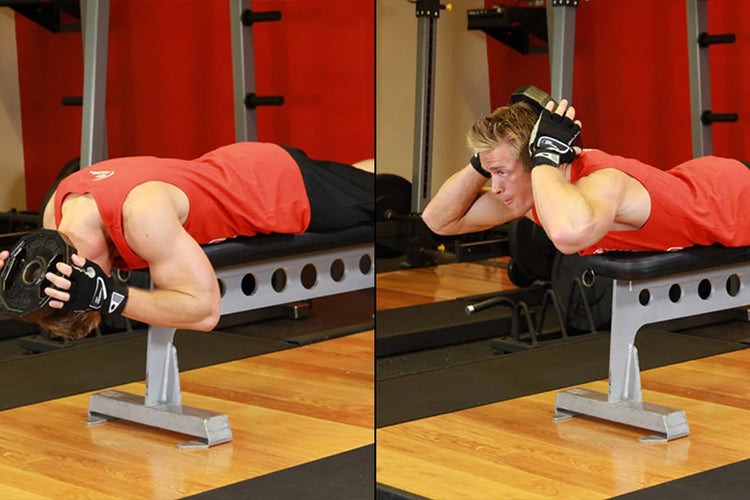
If you want to increase the strength of the neck for a particular sport or the size of the neck muscles for an aesthetic goal, there is no substitute for direct neck training.
If you go to a commercial gym, put on a head strap and start a neck extension exercise, chances are that you will attract a few glances and maybe a smirk from the people around you.

Direct neck training is unusual for the general population and may seem slightly silly to someone who is not familiar with this type of exercise. However, unusual is not synonymous with ineffective, and there is no substitute for direct neck training if your goal is to develop and/or strengthen the neck muscles.
Hypertrophy of the neck muscles
Many athletes do strength training to improve sports performance and reduce the risk of issue, but many other people are mainly concerned with lifting more and/or becoming stronger people all around. In terms of body appearance, no region of the human body is more visible than the face and neck. With the exception of the masticatory muscles, whose strength and strength endurance increased after a 6-week isometric exercise intervention, Training the facial muscles is not feasible (64).
However, you can develop a variety of neck muscles through direct neck exercises. Most people wouldn’t consider the tree trunk connecting Jeff King’s head to the rest of his body to be the pinnacle of aesthetics, but a proportionally thick neck can certainly contribute to a more powerful appearance that appears in almost any environment.
Some trainers and weightlifters have claimed that the neck muscles can be enlarged by shrugs, rowing and deadlifts, and that direct neck exercises are not necessary to achieve this increased muscle size. The trapezius and levator muscles of the scapula constitute an important part of the neck muscles, MRI measurements showing that they represent respectively 34.6% and 8.3% of the total volume of the neck muscles (38). Since both muscles attach to the scapula, an exercise that does not solicit the neck movement, but that solicits the movement of the scapula (e.g. shrug) may have the potential to increase the size of the neck muscles.

However, none of the other muscles that contribute to the movement of the neck attach to the scapula, so they are neglected if direct neck exercises are avoided. Fortunately, the researchers conducted a study on the subject to determine if shrugs, rowing and deadlift variations were sufficient to increase the size of the neck muscles. Evaluated two groups of recreational active subjects who performed four full-body resistance training sessions per week for 12 weeks, with each exercise trained for 3 to 5 sets of 3 to 10 repetitions (17). The exercises included squats, push-ups, bench presses, medium-height movements (i.e. movements above the knee pad), Romanian deadlifts, crunches, bent rows and shrugs. While one group performed exclusively this traditional resistance training protocol, the other group also performed a weighted neck stretching exercise three times a week for 3 sets of 10 repetitions. Before and after the procedure, the strength of the neck extension (that is, The maximum load for 3 sets of 10 repetitions) and MRI cross-sectional measurements were performed on nine muscle sites of the neck (reflecting 13 total muscles), including the trapezoidal and Lifting scapula.
After the Intervention, the group that included the neck extension exercise experienced a significant increase in neck extension strength and neck muscle size in six of the nine measured sites, while in the other group there was no increase in neck strength or size.Both of the muscle sites were made up of neck flexor muscles, so it is not surprising that they showed no change for either group. However, the third site that showed no change in area for both groups was the trapezoid, which is a rather unexpected discovery given the selection of the exercise.

The authors have not discussed the possible reasons for the apparent absence of trapezoidal hypertrophy, and speculation on the topic goes beyond the purpose of this article, but this intriguing result is nevertheless worth highlighting. It should also be noted the discovery that the Hypertrophy of the Lifting shoulder blades has only been observed in the neck extension group, because their anatomical approaches should make it possible to function as a scapular lifter and to be able to train them by shrugging their shoulders.




